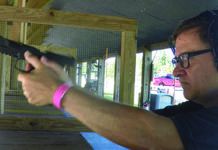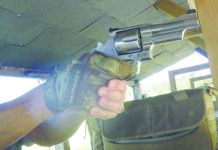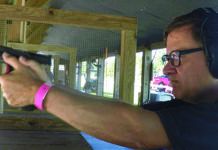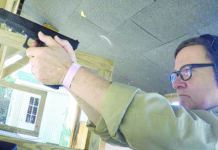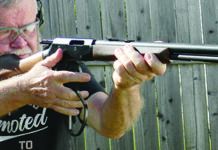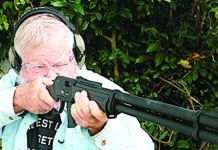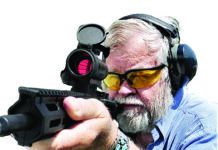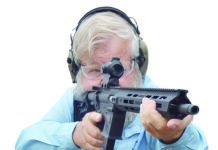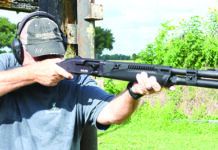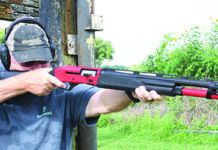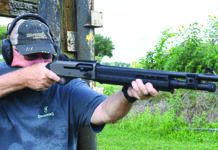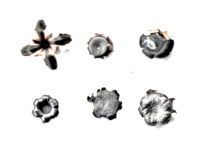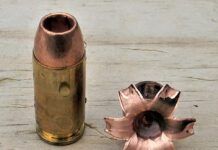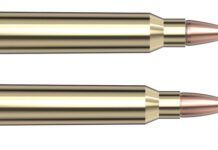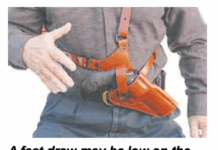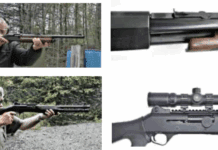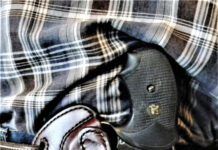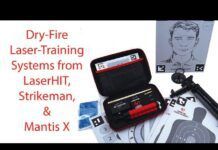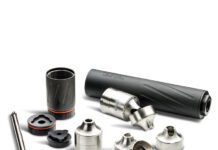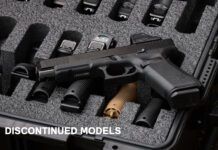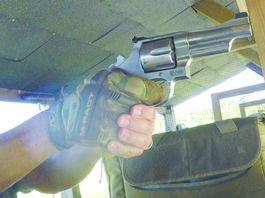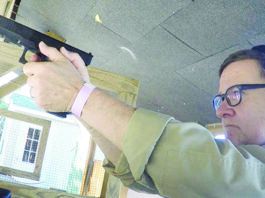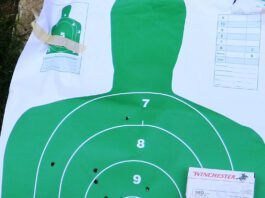KingTuk IWB Holster now accepts Glock pistols fitted with Viridian C Series lasers
Firearms Imports Up, Exports Down from 2011 to 2012
Colorado University-Boulder allows guns in some family housing units
GunBroker Runs Springfield XD-S Giveaway
Thai Member of Parliament ‘accidentally kills secretary’ with UZI
Charter Arms Introduces 9mm Rimless Revolver Pitbull
GunAuction to Watch: Cased Remington O/U Derringer .41 Rimfire w/ Ammo
Current London 2012 Olympic Shooting Results
Cabela’s 1851 Navy .36 Percussion, $120
Wild Bill had a pair. Sam Bass used one, and so did Frank James and Cole Younger. Elmer Keith liked his very much. In fact, Elmer's 1851 Navy Colt was one of his first handguns, and it undoubtedly influenced the grand old master all his life. With all this popularity Gun Tests Magazine thought it would be a good idea to inform its readers where to go to get today's best copy of the breed.
Oklahoma LE not meeting time limits for processing CCLs
Armed Utah citizen stops knife attack
Cowboy Revolvers: Cimarron Outduels Ruger, Heritage 357s
In Cowboy Action Shooting, the targets are usually not especially hard to hit, but the action is very quick, which means a smooth, slick, easy-to-handle revolver gives the shooter an edge. Many shooters will want to get into the game with an "original" — a real Colt, but those sixguns are very expensive and pretty scarce, and those guns are not without their own special problems. But there are plenty of more recent choices in single-action revolvers, and we've tested quite a few. In the February 2006 issue, we called the Heritage Manufacturing Big Bore Rough Rider 45 Colt RR45B5, $379, a Best Buy when tested against a Taurus Gaucho SA45B 45 Colt, $499, which was a Don't Buy model. In March 2005, we shot three more handguns chambered in 45 LC, the Ruger New Vaquero NV-455 No. 5101, $583; Beretta's Stampede JEA1501, $540; and a retest of Cabela's Millennium revolver, $280, with brass frame. We said the Millennium was a Best Buy, followed by the Stampede with a Buy It recommendation, and a Conditional Buy grade for the New Vaquero, which skipped two of the cylinders. In July 2003, we tested four more 45 Colt single actions, saying "Buy It" for the American Western Arms Peacekeeper, $835, and the Uberti Regulator, about $400. A Colt Single Action Army, about $1,700, got a Conditional Buy recommendation for its cost and troublesome operation. Our Pick of the test was a USFA Mfg. Co. Rodeo, about $500. More 45 Colts were tested in April 2001, with Cabela's Millennium Revolver, $200, earning a Best Buy nod over a 1907 Colt SAA, about $1,500; and Ruger's Bisley Vaquero, $450 (both Conditional Buys).
Many of these guns were interesting because they're chambered in the more traditional 45 Long Colt, originally released in the blackpowder cartridge era of 1873-1890. Today, however, low-recoil loads help you go faster in SASS, and if your revolvers shoot 357 Magnums, you can buy a lever gun in the same caliber and shoot the same low-powder loads without having to worry about inserting the wrong shell. Way back in May 2000, we did test three "cowboy concealable" revolvers chambered for 357 Magnum, the EMF Hartford Sheriff's Model ($365, Don't Buy); the Cimarron New Sheriff ($469, Don't Buy), and the Cimarron Thunderer ($489, Conditional Buy). It was far past time to update the smaller-bore single-action revolvers suitable for CAS, so we chose two reproduction Colts and Ruger's New Vaquero, all chambered in the most common CAS competition caliber, 357 Magnum. Our choices were the Ruger New Vaquero NV-34 No. 5107, $719; the Heritage Manufacturing Big Bore Rough Rider RR357CH4, $500; and Cimarron's Evil Roy No. ER4104, $770.
The Heritage and the Cimarron revolvers stayed true to the look of the Colt, with case-hardened frames and wood grips. The Ruger had a few modern innovations under the skin, as well as modern-looking black plastic grips and stainless screws. The overall sizes and weights were similar, with the major difference being the 5.5-inch barrel on the Cimarron Evil Roy, compared to the 4.6-inch-long barrel on the Ruger and the Heritage Rough Rider's 4.75-inch barrel.
We tested all three for function and accuracy, shooting bench groups at 10 yards using a sandbag rest and two modern loads and one cowboy-action load. Though we looked at these guns first for their viability as fun guns being shot at the Big Hat Range, we also wanted to see how they'd handle contemporary rounds if pressed into other duties, such as self protection, plinking, or small-game hunting. The modern selections were Winchester USA's WinClean 357 Magnum 125-grain load and the company's 38 Special +P 125-grain choice. The cowboy action load was Black Hills Ammunition 38 Special Cowboy Action choice, with a 158-grain cast lead bullet. Here's how our contestants fared:


